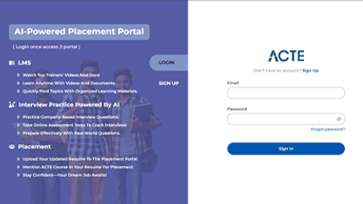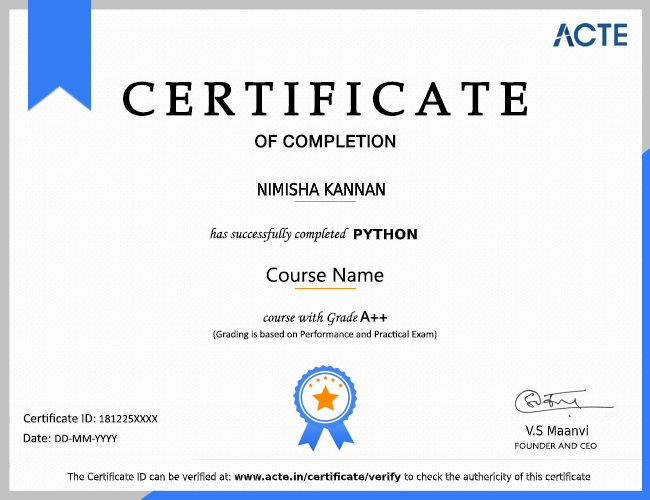Mobile App Development is a booming topic today. That's why iOS App development is the right technology to choose to build a career in it. ACTE offers iOS training courses. Apple allowing developers to create multi-platform apps for macOS and iOS. Enroll Now with us ACTE iOS Classroom & Online Training Course.
Become an iOS Developer in 2020: The 3 Pillars to Jumpstart your Career. More and more companies are relying on mobile apps, so iOS developers are in high demand. Becoming an iOS developer takes some effort though, and the talent shortage keeps driving salaries higher and higher, even for entry-level positions
Yes, iOS developers are in demand. But the basic rule is demand and supply, and now days market is over loaded with iOS developers. It's always good if some one can work on every part of a software system. You should be able to write back-end as well for your mobile(iOS) apps.
- Buy a Mac (and iPhone — if you don’t have one)
- Install Xcode.
- Learn basics of programming (probably the hardest point).
- Create a few different apps from step-by-step tutorials.
- Start working on your own, custom app.
- In the meantime, learn as much as you can about software development generally.
- Finish your app.
- Publish your app to the App Store.
- Upload your app to GitHub.
- Contact the company you want to work in!
We are happy and proud to say that we have strong relationship with over 700+ small, mid-sized and MNCs. Many of these companies have openings for IOS analyst. Moreover, we have a very active placement cell that provides 100% placement assistance to our students. The cell also contributes by training students in mock interviews and discussions even after the course completion.
- Education (if degree obtained or important classes taken)
- Work experience.
- Open source (provide links)
- Your apps (provide links if possible)
- Most relevant technical skills (keep it minimal)
- Anything else noteworthy (clubs you were in, developer meetup you founded, hackathon you won)
Let's first talk about what skills you need to build your own apps. Master Xcode: Xcode is the Mac app you use to create apps. Swift Programming: Swift is the powerful programming language that you use to code iOS, macOS, tvOS and watchOS apps. Build UIs: Every app needs a User Interface (UI).
Yes you can learn Swift and iOS Development without any prior coding experience. Swift has been designed by some of the brightest minds at Apple and they have made sure that the language is easy to learn even by absolute beginners.
Our courseware is designed to give a hands-on approach to the students in IOS. The course is made up of theoretical classes that teach the basics of each module followed by high-intensity practical sessions reflecting the current challenges and needs of the industry that will demand the students’ time and commitment.
Our course runs full-time for 12 weeks, but iOS development can take way longer to learn for a few reasons: First iOS basics are just super hard to get comfortable with on your own—mostly because Objective C is a difficult language in a lot of different ways (it looks pretty funky compared to other languages).
Some things are just very difficult and hard to learn because mobile development is a very difficult area of software engineering.But on the other hand users expect apps to be very fancy and powerful. So it is indeed very hard to become an iOS developer – and even harder if you don't have enough of passion for it.
- You'll be working with a technology you are passionate about.
- You're likely to make more money on iOS.
- iOS developer tools are more sophisticated.
- iOS is considered easier for beginners.
- There'll be less updates to make.
macOS Development for iOS Developers
The hope is that iOS developers will be able to bring their apps over to macOS.
Why Should You Get Into Mac Development
There are some very good reasons to get into Mac development if you already are an iOS developer.
Market Potential
Many app developers will tell you how difficult it is to get users to find your app, use the app, and then give you money through some means. macOS has a greater expectation that software is less frivolous and therefore can be more expensive.
There is some truth to this since if you’re already willing to put cash down on an iMac, iMac Pro, or Mac Pro spending money on software would barely be an expense. With that though comes that your software is more than just another social network app or streaming app but a professional application for creating or building something.
Companion App
By building a macOS companion app for already existing iOS app, you can reach a whole other market and perhaps earn some credit from the folks at Apple. By having your app in macOS as well you offer more versatility for more complex operations and a more open operating system.
How To Get Into Mac Development
Similarities
By already being an iOS developer, you already bring a lot to the table when it comes to Mac development. For one thing you don’t need to learn a whole new programming language. Whether you develop in Objective-C or Swift, you can bring that with you to Mac development.
There are also many frameworks which have common or similar APIs such as Core Data, Core Graphics, CoreML, and more.
Differences
With API that is at least 10 years older, there’s liable to be many differences when it comes to iOS and macOS development. iOS is based around Cocoa Touch with UIKit as the primary UI framework. macOS on the other hand is based around Cocoa and uses AppKit for its UI framework.
The main differences come down to methodologies, language support, UX, and hardware.
Methodologies
AppKit, the primary UI framework, was originally developed at a time before many modern programming concepts had arrived. So while UIKit uses a Target-Action model, as well, delegates, and closures; AppKit uses mostly Target-Action for method signatures.
Another thing is the use of Cocoa Binding for mapping data to controls using key paths. Cocoa Binding is more based around the Model-View-ViewModel pattern as opposed to Model-View-Controller pattern when it comes to displaying model data.
While Cocoa Touch has evolved along with Swift much more fluidly, Cocoa, is still restricted by backwards support and being an older framework.
Language Support
With Objective-C being the more primary language with AppKit, there is a heavier use of the target-action model, selectors, and accessor methods. Selectors while available in Swift tends to be more awkward in use. Typically UIKit will have selectors but usually have an alternative way as well to respond to events such as delegates and closures.
Accessor Methods are used throughout Cocoa and AppKit rather than Properties which are used throughout Cocoa Touch and UIKit.
Also the prefixes for many classes use the NextStep prefix “NS-“ still rather than the UIKit prefix “UI-“.
Development Workflow
There are some things which make developing macOS on macOS hardware. For one thing, there is no need for simulators. However this means you no longer have access to every model which the operating system could be on. This should rarely be an issue but there are times when certain Mac models have differing capabilities and differing speeds.
One difference with Macs are the differing screen sizes. Over the years iOS screen sizes have grown in variety quite a bit but macs have a practically infinite possibilities with screen sizes. Of course macOS apps unlike iOS apps don’t always run in full-screen.































